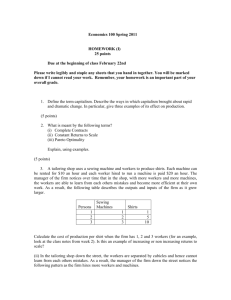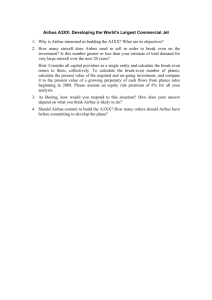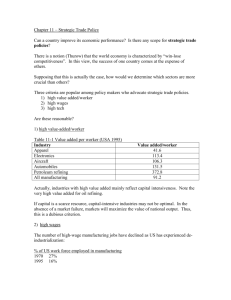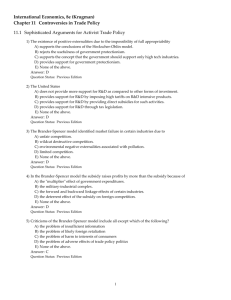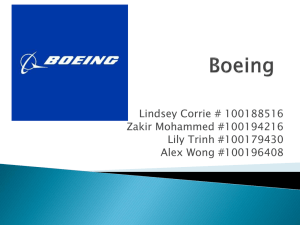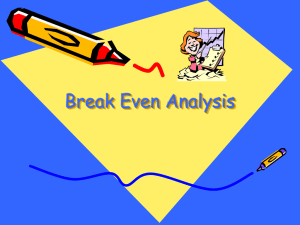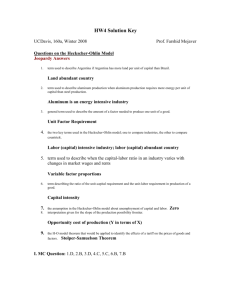Long Questions - Filippo Rebessi
advertisement
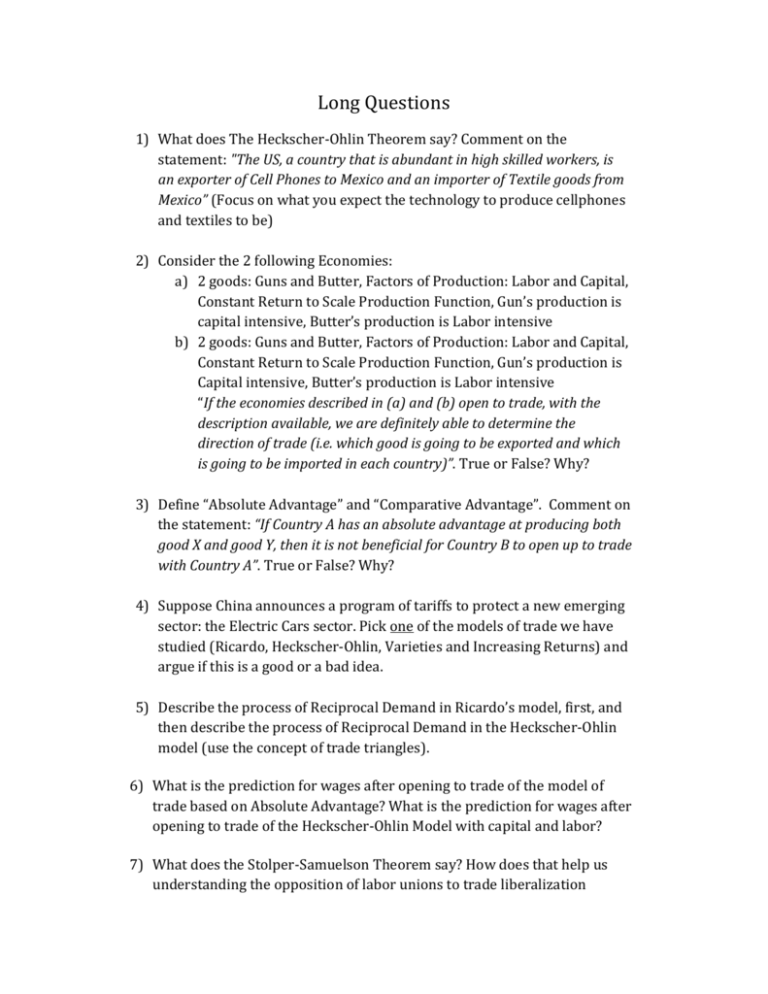
Long Questions 1) What does The Heckscher-Ohlin Theorem say? Comment on the statement: "The US, a country that is abundant in high skilled workers, is an exporter of Cell Phones to Mexico and an importer of Textile goods from Mexico” (Focus on what you expect the technology to produce cellphones and textiles to be) 2) Consider the 2 following Economies: a) 2 goods: Guns and Butter, Factors of Production: Labor and Capital, Constant Return to Scale Production Function, Gun’s production is capital intensive, Butter’s production is Labor intensive b) 2 goods: Guns and Butter, Factors of Production: Labor and Capital, Constant Return to Scale Production Function, Gun’s production is Capital intensive, Butter’s production is Labor intensive “If the economies described in (a) and (b) open to trade, with the description available, we are definitely able to determine the direction of trade (i.e. which good is going to be exported and which is going to be imported in each country)”. True or False? Why? 3) Define “Absolute Advantage” and “Comparative Advantage”. Comment on the statement: “If Country A has an absolute advantage at producing both good X and good Y, then it is not beneficial for Country B to open up to trade with Country A”. True or False? Why? 4) Suppose China announces a program of tariffs to protect a new emerging sector: the Electric Cars sector. Pick one of the models of trade we have studied (Ricardo, Heckscher-Ohlin, Varieties and Increasing Returns) and argue if this is a good or a bad idea. 5) Describe the process of Reciprocal Demand in Ricardo’s model, first, and then describe the process of Reciprocal Demand in the Heckscher-Ohlin model (use the concept of trade triangles). 6) What is the prediction for wages after opening to trade of the model of trade based on Absolute Advantage? What is the prediction for wages after opening to trade of the Heckscher-Ohlin Model with capital and labor? 7) What does the Stolper-Samuelson Theorem say? How does that help us understanding the opposition of labor unions to trade liberalization attempts in developed countries? What about developing countries? (hint: Think about which countries are capital abundant and which are labor abundant) 8) “At constant World Prices, we expect the production of cars in Japan to increase and the production of wheat to decrease if Japan’s endowment of capital increases.” State the Rybczynski Theorem. Which industry in Japan you expect to be relatively labor abundant (assume there are only 2 goods and 2 factors of production: capital and labor; all the assumptions for the H-O theorem hold here)? Explain. 9) In the data, we observe that the nations that are the most open according to the index of openness are also the most prosperous, if we use GDP per capita to measure prosperity. Give a possible explanation for why Openness to Trade can generate economic prosperity. (Hint: See reading for week 1) 10) What is Outsourcing? How has outsourcing of material inputs impacted developed economies? How has outsourcing of services impacted developed economies so far? 11) What are the current main challenges to the ongoing Doha round of global trade negotiations? Discuss (Hint: See reading for Week 7 and class notes) 12) Define the index of Intra Industry Trade. Suppose in your nation the government is currently aggregating goods in the national accounting system in the following 2 big categories: “Clothing” and “Cars”. Discuss how the Intra Industry Trade for the country may change if the aggregation in the national accounting system changes to the following 4 categories: “Small Cars”, “Big Cars”, “Sport Clothing”, “Non-sport Clothing”. Can the index increase after this change? Why? 13) Suppose you observe that, after China and Germany open to trade, the level of wages in Germany, initially higher than in China, has a sudden drop, while the rental rate on capital in Germany increases. The opposite happens in China. Would you interpret this empirical evidence as a success or a failure of the Heckscher-Ohlin model? Why? 14) “Tariffs always produce a net welfare loss for the countries that impose them.” True or False? Explain 15) What is the so called “Leontief Paradox”? How does it represent a challenge to the predictions of the Heckscher-Ohlin model? 16) Compare Ricardo’s model of trade with Heckscher-Ohlin. What assumptions and results are different? What is the main reason for which countries trade in Ricardo’s model and what is the main reason for which countries trade in Heckscher-Ohlin? 17) The “Buy Italian Act” is an act passed by the Italian government that requires that all Italian government agencies purchase goods and services only from domestic (Italian) producers. Do you think this is a good or a bad idea? Make your case using one of the models we have studied. 18) Suppose you are a consultant to the European Commission and you are asked to evaluate a subsidy of EUR 10 billion for the production in the Passenger Aircraft industry, where only 2 world players are present: Boeing (in the US) and Airbus (in Europe). Your subsidy would get to Airbus when they decided to produce, independently of Boeing’s decision. You know that : - If both Boeing and Airbus decide to produce, they have to split revenues and both get a loss of EUR 5 billion. - If only Boeing produces, they make profits for EUR 100 billion, while Airbus gets 0. - If only Airbus produces, they make profits for EUR 100 billion, while Boeing gets 0. If nobody produces, both Airbus and Boeing get 0. - The American congress has banned forever the use of subsidies to the Passenger Aircraft industry with a Constitutional Amendment. Suppose you know that Airbus can get their jets to the market quicker than Boeing (i.e. Airbus has first mover advantage): Would you recommend the Subsidy? Suppose now that you know that Boeing has first mover advantage. Would you recommend the subsidy? Explain 19) A friend of yours just got a new job offer in New York City. She is very happy, because her new salary is 10% higher than what she was making in her hometown of New Ulm, Minnesota. Would you recommend her to take the offer? Explain (use only economic arguments to justify your answer) 20) Australia is land abundant. India is labor abundant. Wheat is land intensive relative to textiles. The countries share the same technologies to produce wheat and textiles, with constant returns to scale and using land and labor (all the assumptions for the H-O model hold). Draw the Indian and Australian PPF. Show where the autarky point for Indian and Australia should be. Who is exporting textiles? Who is importing Wheat? Explain in detail.
